Table of Contents:
Earl Hines – Earl “Fatha” Hines (1903-1983)

Earl Kenneth Hines, (Duquesne, Pennsylvania, December 28, 1903, Oakland, California – April 22, 1983), went to school in Pittsburgh, at the same time that he served as a pianist in nightclubs.
Best Sheet Music download from our Library.
Already in 1922, Earl Hines began to live in Chicago; six years later he founded his first band and worked in the group of trumpeter Louis Armstrong, where he was the musical director of his group, “Louis Armstrong Stompers” and also with the clarinetist Jimmie Noone at the Apex Club in 1928. Subsequently, he collaborated with Armstrong at the piano in the rhythms of the group that made the great trumpet player become the creator of modern jazz, the “Hot Five”, the first one and then expanded to the “Hot Seven”.
During the thirties, his band came on the radio of the United States through the program that Hines had. Many important figures in the jazz world played with the band of Earl Hines, among them the saxophonist Charlie Parker and trumpeter Dizzy Gillespie.
In 1947, the group disbanded; during the four years following Hines worked again with Louis Armstrong, this time in her band called, “All-Stars”. Also known with the pseudonym of ‘Fatha’, Earl Hines differed from other pianists of the 20th century for his innovative contribution of rhythms and accents he took to the instrument, which at that time were considered to be rare and heterodox.
Earl Hines, he remained during the whole of that decade, leading and influencing all the pianists in jazz of its time that they saw in him, the link between the piano jazz classic and the modern. In the fifties, Hines saw decline, its star and retired to play the piano in a small club owned in Oakland (California) where he resided.
But in the sixties, following the signing of the contracts in the city of New York in 1964, Earl Hines was recovered for the jazz, and he resumed his career already at full maturity with great success.
At that point Earl Hines had assimilated some of the traits of some of their talented disciples, as was Teddy Wilson, and the scene expressed an inspiration without limits. Earl Hines – considered the “father of jazz piano”, hence his nickname of “Fatha“- died with the boots set an April 22, 1983.
Please, subscribe to our Library. Thank you!
Earl Hines and “Rosetta”
One of the proudest moments of Earl “Fatha” Hines’s career took place in 1976, when he was invited to perform at a White House dinner in honor of the President of France. After an evening chatting with Betty Ford and Clint Eastwood, Hines sat down at the piano in the East Room and launched into “Rosetta.”
“Rosetta” had been composed by Hines and his arranger Henri Woode over forty years earlier. That the pianist chose this tune for such an occasion, and at this late stage of his career, says much about its prominence in his life. Only “Boogie Woogie on the St. Louis Blues” held the same pride of place in Hines’s performances.
He revisited “Rosetta” hundreds of times, in solo performances, with vocalists, and with groups of varying sizes. But though the association of a jazz musician with a “signature” tune is not unusual, Hines’s relationship with “Rosetta” was complex and unique. On October 6, 1939, at the end of a lengthy band session for the Bluebird label, Hines recorded four solo versions of “Rosetta.”
Only the third take was issued at the time, coupled with Hines’s solo version of “Glad Rag Doll,” recorded ten years earlier. The first two (rejected) takes are presumed lost, but the fourth was included many years later on an LP reissue by RCA-France.
The two available performances, placed side by side, capture Hines’s relentless virtuosity and innovative musical mind, and provide a fascinating example of how a jazz musician can revisit the same melody and chord structure from two perspectives. But the recordings also raise larger issues of context, for they are closely linked both to the tune’s creation and subsequent performance history and to Hines’s working life as one of the most gifted band pianists of his generation.
In addition, Hines’s 1939 versions of the tune dramatically capture the ways in which he had, in less than a dozen years, revolutionized the very genre of the piano solo. The nature of the two solos also raises intriguing issues about the place of transcription in jazz research.
Much of my discussion here is rooted in a study of my own complete transcriptions of these recordings. The incorporation of such scores into the study of jazz is now widely accepted in the scholarly community. Yet, though the use of notated excerpts to illustrate specific analytical points is a familiar aspect of academic discourse, study of complete transcriptions raises additional issues.
When one is confronted with the entire “text” of an improvised performance fixed neatly on the page, it is difficult not to evaluate the score through the aesthetic lens of Western art music. The issue is particularly conspicuous in piano transcriptions, for they can appear deceptively clean.
Although the transcriber must wrestle with rhythms, chord voicings, and other issues, the notes on the keyboard are invariable; unlike other solo or ensemble transcriptions, the reader is not continually reminded of the inadequacies of Western notation to capture bends, growls, scoops, and other jazz techniques related to pitch and timbre.
A complete piano transcription easily lends itself to structuralist interpretation, for it is tempting to evaluate the performance based on the integrity of its overall form: the use of effective contrast between strains or choruses, facility of modulation, pacing of important events, motivic development, and so on.
Yet, though Western aesthetic standards are not wholly inappropriate for a pianist so steeped in the classical tradition as was Hines, his artistry as a soloist must also be evaluated by different criteria. Earl Hines was a pianist who relished testing himself and his audience, a feature vividly captured by Gunther Schuller in his observation that “listening to Hines is always like standing at the edge of a precipice in a heavy wind” (Schuller 1989:284).
Though his solos seem at times to teeter near structural incoherence, this feature is not a symptom of an erratic musical mind nor an inexperienced performer, but is rather the very essence of his improvisational style. Hines’s brinkmanship posed substantial challenges for my role as transcriber, for rarely have we encountered a musical art more resistant to being captured in notation.
Yet, the more time we spend with the highly artificial musical “texts” we have created, the more we are struck that the scholarly and ideological issues surrounding transcriptions may rest less with the process itself (the results of which, as most scholars agree, are highly subjective, pallid representations of the original recordings) and more, as both Ingrid Monson and Paul Berliner have suggested, with how the texts are used to make analytical and aesthetic observations about the improviser’s art (Monson 1996:133-91; Berliner 1994:11-12).
In this article, therefore, it’s suggested that the “Rosetta” transcriptions be used less as “complete works” for study and more as windows into the ways in which Hines engages with and signifies upon the tune, its performing history, and his own musical artistry.
When his work is viewed this way, these two transcriptions provide a fascinating guide, however conjectural at times, to the moment-to-moment unfolding of a great musical imagination.
“Rosetta”‘s story begins in 1932, when Hines (1903-1983) met pianist and composer Henri Woode while on tour in Kansas City. Hines hired Woode as an arranger, and he created several notable showpieces for the pianist’s band, including 1932’s raucous “Sensational Mood.”
As Hines recalled, “Rosetta” was inspired by Woode’s girlfriend: He was crazy about a girl called Rosetta. Whenever I wanted him, or asked the guys where he was, they used to say, “He’s with Rosetta.”
Finally I got a bit mad, and told him to have Rosetta come where we were playing, and she could eat and drink and I’d pay for it. Then he heard a little phrase I made one night on the piano, .and he worked it into a tune we wrote together. We dedicated it to her and called it “Rosetta” and it became a big hit … (Dance 1977:76) The passage suggests that the tune represents a kind of signirying on Hines’s improvisational style. As for the nature of the phrase that caught Woode’s ear, it may be the drooping fourth in mm. 2-3 and 4-5 of the tune’s A section-one of the melody’s most distinctive features (see example 1 for the complete melody line and accompanying harmony).
This idea surfaces occasionally in other improvisations of the same time, where its “open” sound complements the horn-like conception of Hines’s right hand. It is hinted at near the end of the second eight-bar phrase in Hines’s solo on “Sensational Mood,” and more overtly referenced in the third chorus of 1932’s “Down Among The Sheltering Palms” (take 1) (ex. 2).5 (In this and other examples, where noted, I have transposed from the original key to F to facilitate comparison with “Rosetta”‘s original melody line.)
In addition to the descending fourth motive, the passage also suggests the repeated “A” in the fifth and sixth measures of Hines’s tune. The gesture also plays a prominent role in other melodies that Hines wrote or co-wrote, including “A Monday Date” (1928), ”You Can Depend On Me” (1932), “Straight to Love” (1941), and “Am I Too Late?” (1947), inviting speculation that these tunes also grew out of improvisations.
The tune was submitted for copyright on February 3, 1933. Ten days later, Hines’s band made four takes of it for the Brunswick label, in an arrangement by saxophonist Cecil Irwin. Two of the takes featured an Armstrong-style vocal by trumpeter Walter Fuller, who was so delighted with the success of the number that he later named his daughter Rosetta (Dance 1977:168).
Hines’s group recorded the tune again in November of 1934, in a somewhat updated (and faster) arrangement by bassist Quinn Wilson. In 1935 the tune was formally published by Joe Davis, Inc. in a piano/vocal version, with an undistinguished verse that is rarely if ever played, and the tune began to enter the country’s band repertory. By 1942, it had been featured on twenty-two recordings by other performers (Crawford and Magee 1992:60-61).

All but six of these are instrumentals, a result, perhaps, of rather clumsy lyrics. Most likely because of the tune’s association with Hines, thirteen of these recordings feature pianists in prominent roles. And, significantly, six feature the artists most responsible for shaping the art of the piano solo during the 1930s-Art Tatum and Teddy Wilson. Indeed, besides Gershwin’s “Liza,” “Rosetta” is the only tune both Tatum and Wilson recorded as soloists prior to 1942.

By the time he made his first solo recordings of “Rosetta” in 1939, the tune was a cherished friend. Trombonist Trummy Young, who joined the Hines group not long after the first band recording was made, once remarked that “Earl liked that tune so much we used to play it two or three times a night sometimes.
He just fell in love with the tune” (Dance 1980:40). But though Hines clearly had emotional attachments to the piece, like other musicians he must have also been drawn to its wide range of possibilities. Beyond the distinctive sighing fourth figure in the melodic line, musical details ofthe tune show superb craftsmanship (ex. 1).
Cast in the familiar 32-bar AABA form, harmony, melody, and rhythm work together to create drive to the end of each eight-bar phrase. The first four measures are made notable by the shifting of harmony under a single pitch: in measure 2, under a held C in the melody, the harmony shifts from tonic to dominant with a raised fifth. The inspiration for this effect may have come from Victor Herbert’s “Indian Summer” (1919), a tune Hines returned to frequently in later years (Dance 1977).
The first three bars enrich the F tonality with tension, rather than creating harmonic motion. In the last five bars of each A section, however, both harmonic and melodic rhythm increase in speed. The harmony, beginning with the D7 chord, moves through a series of secondary dominants until the tonic is again reached at measure 7. The idea of shifting harmonies under a single pitch (the A in mm. 5-6) is continued throughout this passage, with the melody line featuring diminutions in the rhythmic pattern.
This tension between melody and harmony is underscored by Quinn Wilson in his 1934 arrangement, in which the brass punch out a new chord at the beginning of each measure. The bridge modulates to the minor iii (A minor), a distinctive move, though not unheard of (a similar key change occurs in “I Never Knew” of 1925 and “More Than You Know” of 1929, among other examples). Recordings suggest that the melody of the bridge was less fixed from the outset.
The Earl Hines band versions present an instrumentally-conceived line that lacks a strong sense of melody, and even in Fuller’s first vocal the trumpeter seems to be making up the tune as he goes along. Certainly, most performances avoid the trite phrasing of the melody as presented in the 1935 sheet music, but this may simply reflect the tendency of Swing Era soloists and arrangers to abandon a tune’s melody at the bridge.
Hines’s two 1939 takes of “Rosetta” are intriguing examples not only of his improvisational approach, but of his recasting of the piano solo, a process he had begun in his revolutionary 1928 solo recordings for the QRS label. Though much has been written about various stylistic trajectories in pre-1940s jazz piano (stride, boogie-woogie, swing, etc.), as well as their important practitioners, less has been made of the evolution of the jazz piano solo as a specific genre-one with its own rules and performance history.
Because pianos can stand alone in performance, a uniquely varied literature and performance practice has developed around them in jazz. Since pianists could duplicate both the role of solo instruments (in the right hand) and the backing of a rhythm section (in the left) they were prized by club owners (or party hosts) with limited funds to spend on live entertainment.
But though their choice of instrument could be financially lucrative, piano soloists also faced the challenge of building a satisfYing, swinging performance without help from other ensemble members, relying on their own ingenuity to achieve variety and their own internal sense of time to maintain tempo and momentum. Still, though these challenges were daunting (and not always adequately met by pianists of the 1920s and ’30s), they also lent the piano solo genre its uniqueness as a self-contained expression of improvisational creativity. A jazz piano solo was (and is) the work of a single imagination, one with complete control over the shaping ofthe event.
Rosetta, by Earl Hines (Piano Solo arr.sheet music)
| Artist or Composer / Score name | Cover | List of Contents |
|---|---|---|
| Status Quo – Rockin All Over The World Guitar Vocal Album Songbook |
 |
Status Quo – Rockin All Over The World Guitar Vocal Album Songbook |
| Status Quo Whatever You Want Guitar Tab | Status Quo Whatever You Want Guitar Tab | |
| Status Quo Guitar Legends Guitar TABs |
 |
Status Quo Guitar Legends Guitar TABs |
| Status Quo In The Army Now (guitar) |
 |
|
| Status Quo Living On An Island Bass Transcription | Status Quo Living On An Island Bass Transcription | |
| Status Quo Rock Til You Drop Guitar Songbook |
 |
Status Quo Rock Til You Drop Guitar Songbook |
| Status Quo Rockin All Over The World |
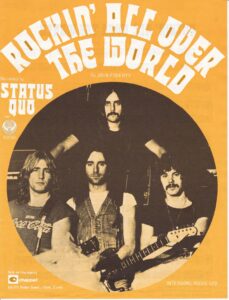 |
|
| Stavros Lantsias Waltz of the Eyes |
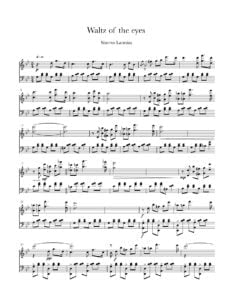 |
|
| Steamboy – Manchester1886 – Steve Jablonsky | ||
| Steamby – Flyinthesky – Steve Jablonsky | ||
| Steely Dan Songbook Complete |
 |
Steely Dan Songbook Complete |
| Stefan Schyga Guitar Learn How To Play The Classical Guitar |
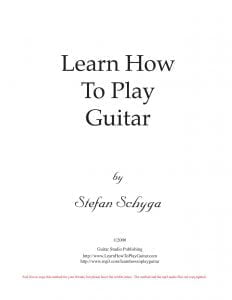 |
|
| Stefano Bollani – Antonia (Antonio Zambrini) spartiti Jazz Transcription |
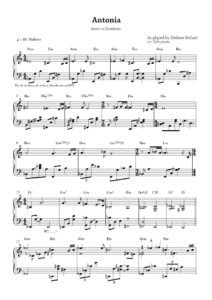 |
|
| Stefano Bollani – Antonia Antonio Zambrini (Jazz Transcription) (Musescore File).mscz | ||
| Stefanuk Misha V. – Jazz Piano Chords |
 |
|
| Stella by Starlight by Ned Washington and Victor Young JAZZ PLAY ALONG LEAD SHEET MUSIC | Stella by Starlight | |
| Stella By Starlight Victor Young (Jazz Standard) (Musescore File).mscz | ||
| Stella, Simone – Canon on the name B.A.C.H. (piano) |
 |
|
| Stella, Simone – Etude-Bizzarria (cello) |
 |
|
| Stella, Simone – Jeux de cromorne (organ) |
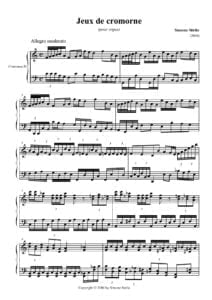 |
|
| Stella, Simone – Jeux de flutes (organ) |
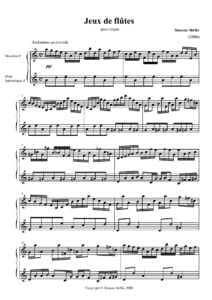 |
|
| Stella, Simone – Les fleurs du mal (cello&piano) |
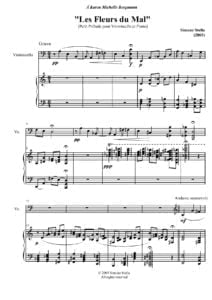 |
|
| Stella, Simone – Victimae Paschali, versetto (organ) |
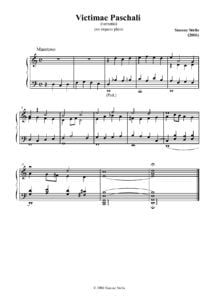 |
|
| Stelvio Cipriani Anonimo Veneziano |
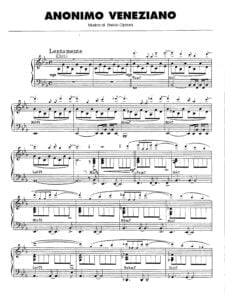 |
|
| Stephane Boget – Les Secrets Du Hard Rock (FR) avec audio MP3 et Tablature |
 |
secrets du hard rock |
| Stephen Duro – Forget Me Not Waltz (ABRSM Piano) |
 |
|
| Stephen Foster Songbook (published 1854) |
 |
|
| Stephen Goss Guitar Concerto 2012 Complete Score for guitar and orchestra |
 |
|
| Stephen Hough Song Transcriptions for solo piano |
 |
|
| Stephen Sanchez – Until I Found You Sheet Music |
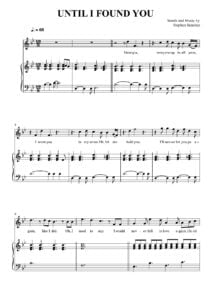 |
|
| Stephen Schwartz Songbook |
 |
Stephen Schwartz Songbook |
| Steve Eckels – 20 Easy Classical Guitar Pieces For Kids with TABs |
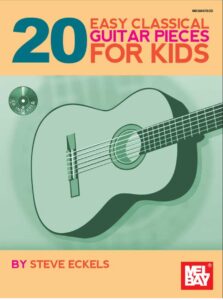 |
Steve Eckels – 20 Easy Classical Pieces For Kids with TABs |
| Steve Green – Find us faithful – Easy Piano |
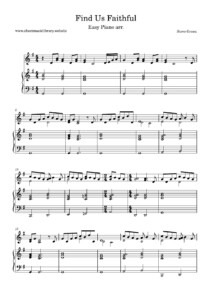 |
|
| Steve Green – Household Of Faith (Piano solo sheet music) |
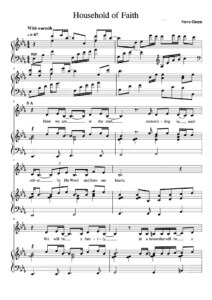 |
|
| Steve Howe – All My Yesterdays (Book) |
 |
|
| Steve Howe Guitar Pieces |
 |
Steve Howe Guitar Pieces |
| Steve Morse Southern Steel Guitar Songbook with Tablature |
 |
Steve Morse Southern Steel Guitar Songbook |
| Steve Reich – Writings On Music (Book) | Steve Reich – Writings On Music (Book) | |
| Steve Reich Electric Counterpoint Solo |
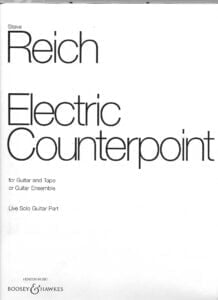 |
|
| Steve Vai – Guitar Styles & Techniques (Signature Licks) with Tablature |
 |
Steve Vai – Guitar Styles & Techniques (Signature Licks) |
| Steve Vai Alien Love Secrets Naked Vamps Guitar Tabs signature licks |
 |
Steve Vai Alien Love Secrets Naked Vamps Guitar Tabs signature licks |
| Steve Vai Fire Garden Songbook Guitar Tabs |
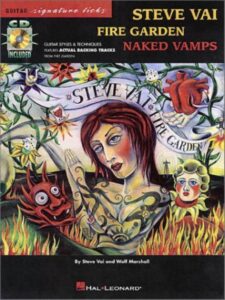 |
|
| Steve Vai Flexable Leftovers Guitar Tabs |
 |
Steve Vai Flexable Leftovers Guitar Tabs |
| Steve Vai Passion Warfare Songbook Guitar Tabs |
 |
|
| Steve Winwood Greatest Hits |
 |
Steve Winwood Greatest Hits |
| Steven Feifke Autumn Leaves sheet music transcription | Steven Feifke Autumn Leaves sheet music transcription | |
| Steven Feifke Confirmation sheet music transcription |
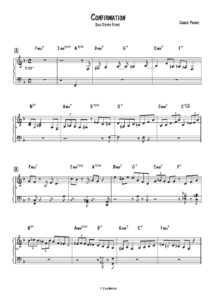 |
|
| Steven Feifke Tenor Madness sheet music transcription |
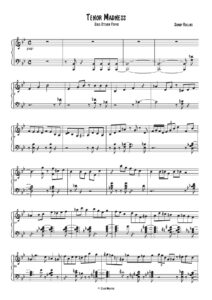 |
|
| Stevie Nicks – Greatest Hits (Songbook) – Piano Vocal Guitar Sheet Music) |
 |
Stevie Nicks – Greatest Hits (Songbook) – Piano Vocal Guitar Sheet Music) |
| Stevie Ray Vaughan – Signature Licks – The Guitar Style Of (play along with audio MP3) Guitar Tablature Songbook |
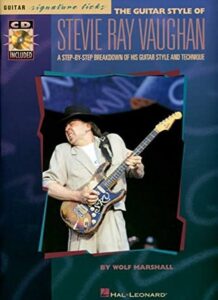 |
Signature Licks – The Guitar Style Of Stevie Ray Vaughan |
| Stevie Wonder Isn’t She Lovely (As Played By Terrence Shider) |
 |
|
| Stevie Wonder – Don’t You Worry Bout A Thing | ||
| Stevie Wonder – Higher Ground | ||
| Stevie Wonder – I Just Called To Say I Love You | ||
| Stevie Wonder – Isn’t She Lovely Piano Vocal Guitar chords |
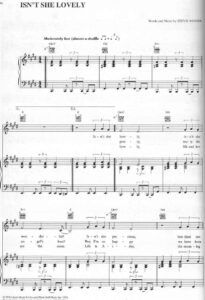 |
|
| Stevie Wonder – Isnt She Lovely | ||
| Stevie Wonder – Knocks Me Off My Feet | ||
| Stevie Wonder – Lately | ||
| Stevie Wonder – Master Blaster (Jammin) El. Bass TAB sheet music |
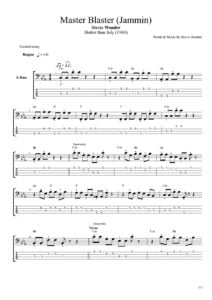 |
|
| Stevie Wonder – Master Blaster (Jammin) Guitar TABS & El. Bass sheet music |
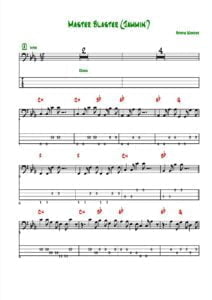 |
|
| Stevie Wonder – Master Blaster (Jammin) Piano sheet music | Stevie Wonder – Master Blaster (Jammin) Piano sheet music | |
| Stevie Wonder – My Cherie Amour | ||
| Stevie Wonder – Signed Sealed Delivered | ||
| Stevie Wonder – Songs In The Key Of Life (Book) |
 |
Stevie Wonder – Songs In The Key Of Life |
| Stevie Wonder – Superstition | ||
| Stevie Wonder – The Best of |
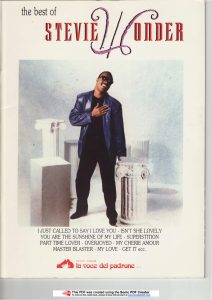 |
Stevie Wonder – The Best of |
| Stevie Wonder – The Sound Of Stevie Wonder His Words And Music Book by James E. Perone Book |
 |
|
| Stevie Wonder – The Stevie Wonder Anthology |
 |
Stevie Wonder – The Stevie Wonder Anthology |
| Stevie Wonder – The Stevie Wonder Collection (Piano and Guitar) |
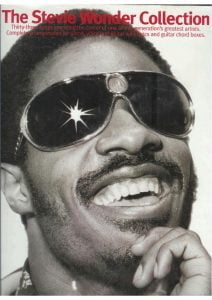 |
The Stevie Wonder Collection (Piano and Guitar) |
| Stevie Wonder – You and I (piano solo sheet music) | Stevie Wonder – You and I (piano solo sheet music) | |
| Stevie Wonder – You Are The Sunshine Of My Life | ||
| Stevie Wonder – You Are The Sunshine Of My Life (piano solo) | Stevie Wonder – You Are The Sunshine Of My Life (piano solo) | |
| Stevie Wonder For Piano Solo (Songbook) (Stevie Wonder) |
 |
Stevie Wonder For Piano Solo (Songbook) (Stevie Wonder) |
| Stevie Wonder Hits (Guitar Songbook with TABS) – Stevie Wonder |
 |
Stevie Wonder Hits (Songbook) – Stevie Wonder |
| Stevie Wonder Hotter Than July |
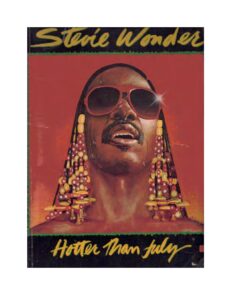 |
Stevie Wonder Hotter Than July |
| Stevie Wonder Isn’t She Lovely |
 |
|
| Stevie Wonder Moon Blue Piano solo |
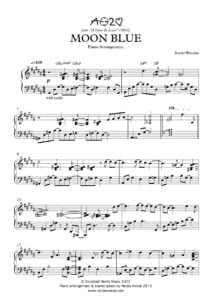 |
|
| Stevie Wonder The Great Songs (arranged for all organ) |
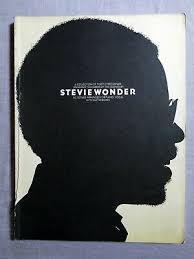 |
Stevie Wonder The Great Songs |
| Stevie Wonder’s Hits (very easy piano, vocal & guitar) |
 |
Stevie Wonder’s Hits (easy piano, chords) |
| Sting Let Your Soul Be Your Pilot Sheet Music |
 |
|
| Sting The Singles Collection |
 |
Sting The Singles Collection |
| Sting – Broken Music A Memoir (Book) AutoBiography |
 |
|
| Sting – Every Breath You Take | ||
| Sting – Fields Of Gold | ||
| Sting – Fields Of Gold – The Best (Songbook) |
 |
The best of Sting |
| Sting – I’ll be missing you | Sting – I’ll be missing you | |
| Sting – Piano Solos |
 |
Sting – Piano Solos |
| Sting – The Book of My Life (Piano) | Sting – The Book of My Life (Piano) | |
| Sting and the Police – The Very Best Of |
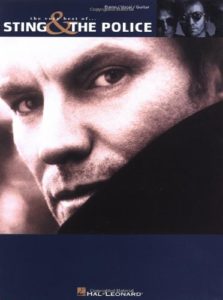 |
Sting & the police contents |
| Sting If On A Winters Night Vocal Piano Songbook |
 |
Sting If On A Winters Night Vocal Piano Songbook |
| Sting Mercury Falling Piano Vocal Songbook |
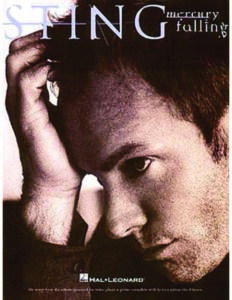 |
Sting – Mercury Falling (Songbook) contents— 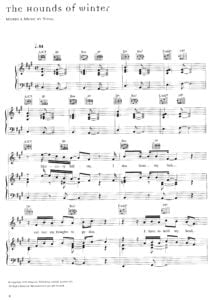 |
| Sting Rock Score |
 |
|
| Sting Sacred Love |
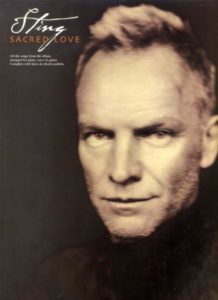 |
Sting Sacred Love contents — Sting Sacred love |
| Sting Ten Summoner 27s Tales Songbook |
 |
Sting Ten Summoner 27s Tales Songbook |
| Sting The Anthology (Guitar & Piano) |
 |
Sting The Anthology (Guitar & Piano) contents — 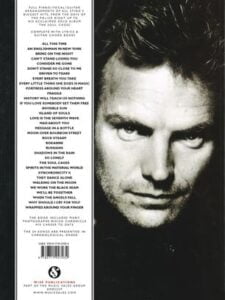 |
| Sting the very best of – Easy arrangements for Piano (Hans-Güter Heumann) |
 |
Sting the very best of – Easy arrangements for Piano |
| Sting- Every Little Thing She Does Is Magic – Piano | Sting- Every Little Thing She Does Is Magic – Piano | |
| Stockhausen, Karlheinz – Klavierstuck IX |
 |
|
| Stockhausen, Karlheinz – Klavierstuck VI |
 |
|
| Stockhausen, Karlheinz – Klavierstucke 2, I-IV |
 |
|
| Stone Roses Songbook with Tablature |
 |
Stone Roses Songbook Guitar |
| Stories Of Standard Teaching Pieces (By Edward Baxter Perry) (1910) |
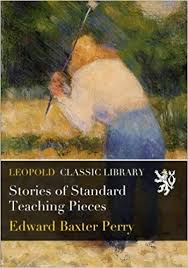 |
|
| Stormy Weather (Film music theme) Harold Arlen |
 |
Stormy Weather |
| Stranger Things Main Theme Piano solo |
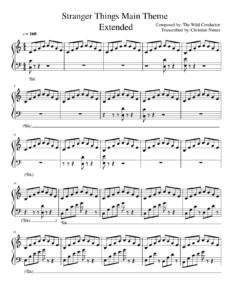 |
|
| Stranger Things Main Theme Piano Solo Arr. |
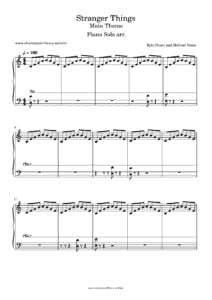 |
|
| Stranger Things Main Theme Piano solo arr. (Musescore File).mscz | ||
| Strauss Johann – The Blue Danube Piano solo |
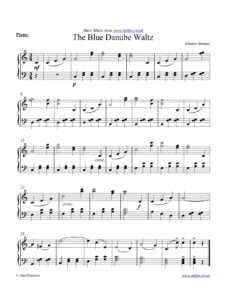 |
|
| Strauss Richard – Also Sprach Zarathustra (Trans. R. Schmalz for Piano solo) |
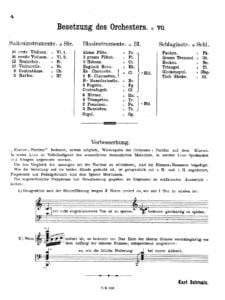 |
|
| Strauss – An Der Schönen Blauen Donau (Advanced Ver.) (Musescore File).mscz | ||
| Strauss – An Der Schönen Blauen Donau The Blue Danube (Easy Piano Solo) (Musescore File).mscz | ||
| Strauss – An Der Schönen Blauen Donau The Blue Danube (Intermediate Piano Solo) (Musescore File).mscz | ||
| Strauss Also sprach Zarathustra op. 30 (arr. for 2 pianos) |
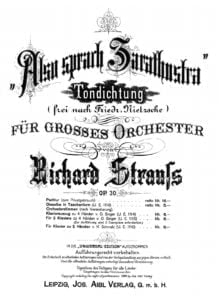 |
|
| Strauss, Johann Ii An Der Schönen Blauen Donau, Op.314 Jrummel Easy Piano Solo |
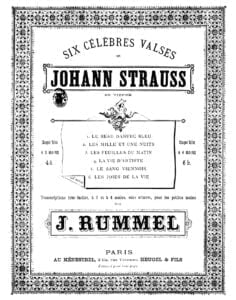 |
|
| Strauss, Johann Ii Waatzes For Piano Op. 314 (Complete) |
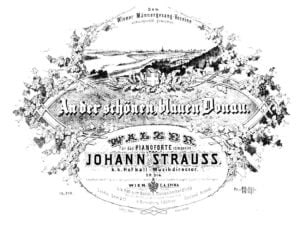 |
|
| Strauss, Johann Jr. – The Blue Danube Waltz (Easy Piano Solo) |
 |
|
| Strauss, Richard Also Sprach Zarathustra, Op 30 Einleitung, Oder Sonnenaufgang (Solo Piano Arr) |
 |
|
| Stravinski, Igor – Poetica Musical Book (Español – Spanish) |
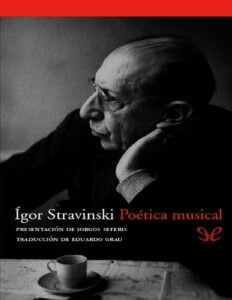 |
|
| Stravinsky Ragtime (Piano Solo, Transcribed By The Composer) |
 |
|
| Stravinsky The Firebird Suite Piano Transcription |
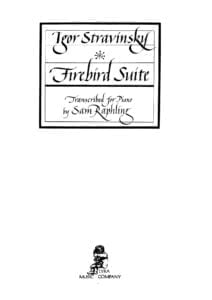 |
|
| Stravinsky Three Movements From Petrushka (piano solo arr.) |
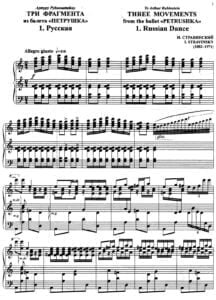 |
